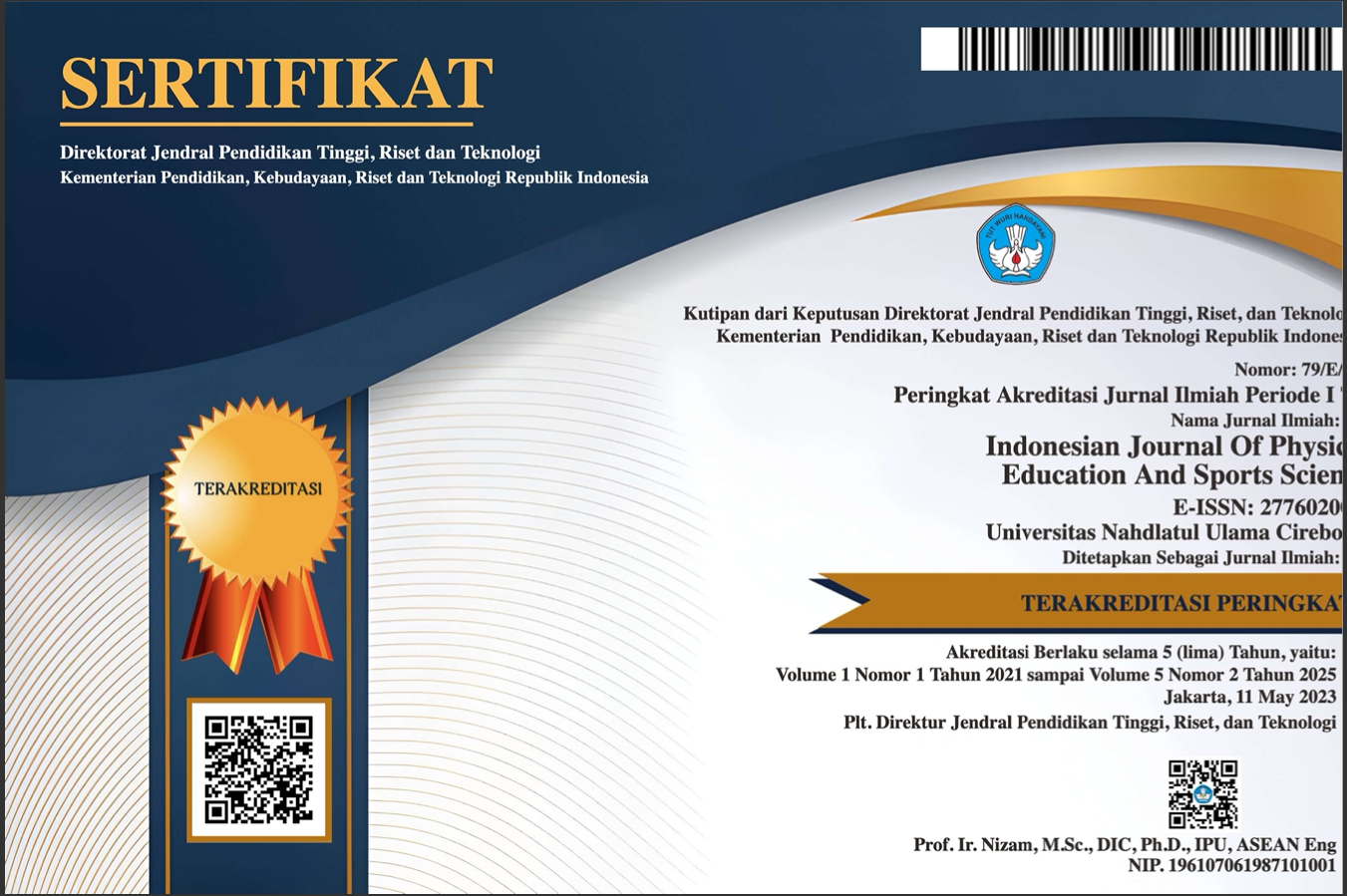The Traditional Egrang Game: Improving Students' Static Balance
DOI:
https://doi.org/10.52188/ijpess.v4i3.757Keywords:
Learning Variation, Classroom Action Research, Static Balance, Egrang Traditional GameAbstract
Study Objective. The study aimed to determine the appropriate learning method to improve students' static balance.
Materials and Methods. This study used the Kemmis model of PTK method with phases: preparation, implementation, observation, and reflection. Data collection instruments with static balance measurement standing stork test. The target population in this study were all fifth grade students of SD Negeri 3 Batu Tungku, Panyipatan District, the target population was the fifth grade of SD Negeri 3 Batu Tungku, totalling 7 people consisting of 2 men and 5 women. In this study will use consists of data analysis techniques with static balance norms and then proceed with the percentage formula.
Results. Based on the results of data analysis, it can be seen that there is an increase in learning outcomes through two cycles according to the research data. Data analysis of first cycle completeness was 14.28% and second cycle completeness was 71.57%.
Conclusion. The results of research analysis based on data show that traditional Egrang games can be used by educators in choosing learning methods used to improve the ability of static balance skills of students, especially at the Dasa School level.
Published
How to Cite
Issue
Section
Copyright (c) 2024 Siti Hajar Nurhasanah, Mashud Mashud, Herita Warni

This work is licensed under a Creative Commons Attribution-NonCommercial-ShareAlike 4.0 International License.











